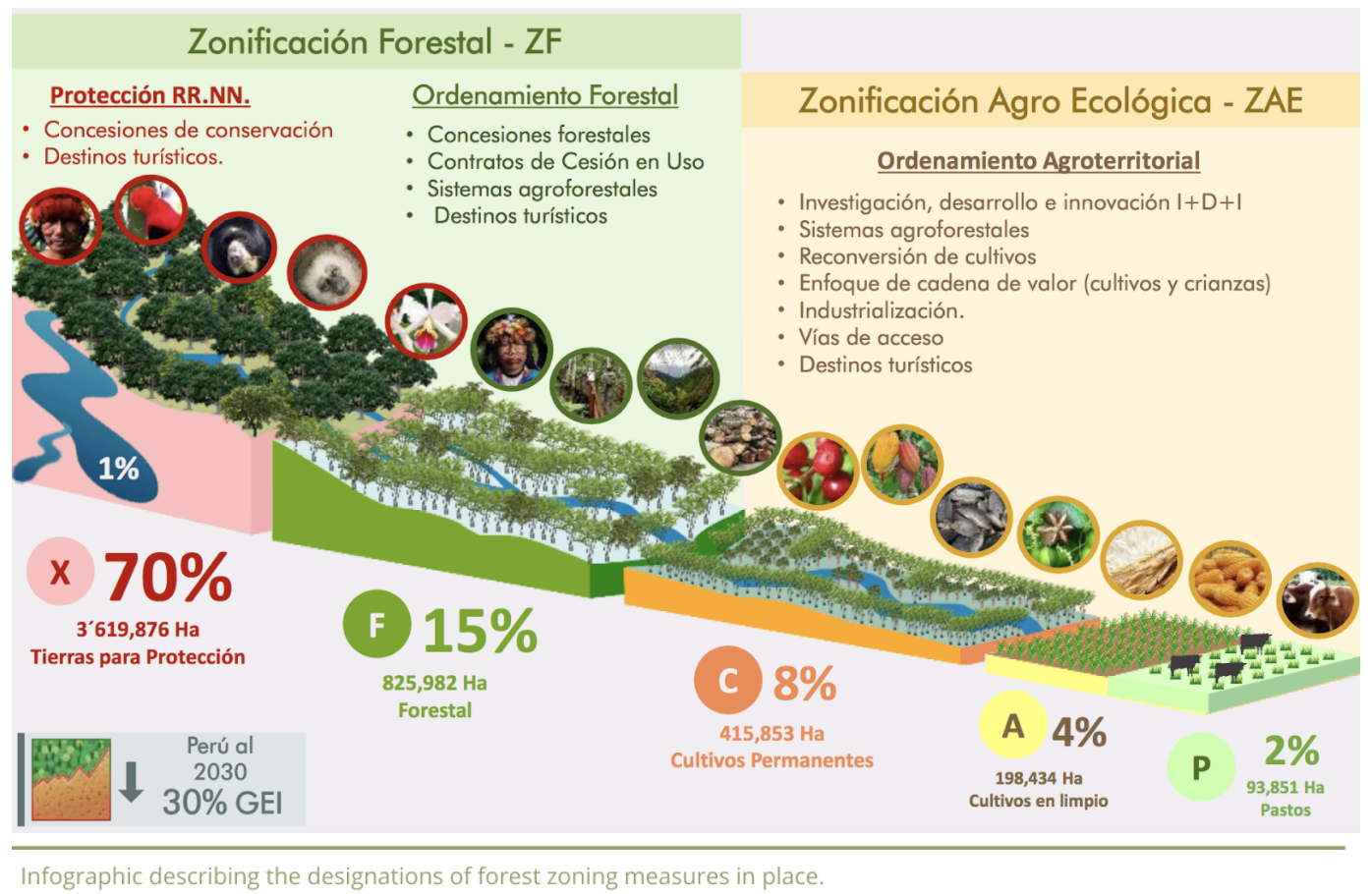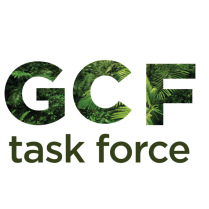San Martin: Sustainability Plan
2030 Regional Government Sustainability Plan
The Regional Government of San Martin, in its role as promoter of development in the San Martin region, has established a political territory approach focused on production, protection, and inclusion, as the central guideline for their 2030 Sustainability Plan. Under the already approved Regional Ordinance N ° 015-2012-GRSM / CR, San Martin aims to set guidelines for sustainable development in activities and services of the environmental, social, economic, and political institutional in the territory. In addition, their 2030 Sustainability Plan aims to set a platform for the improvement of income and quality of life of the people in San Martin.
To achieve this, the government of San Martin has established a “land policy approach,” which allows them to promote conservation projects and sustainable development through a platform of policies that foster environmental protection. Policy 1 targets land and territory development. Policy 2 focuses on governance for sustainable human development.
Policy 1: Territory and Potential:
- Agricultural and aquaculture productive zone. The objectives are to promote agricultural and aquaculture production with spatial awareness and sustainable development.
- Urban, industrial and expansion area. The objectives are to promote the process of orderly occupation of the territory and regional urban development.
- Conservation area and use of natural resources. The objectives are to promote the conservation and sustainable use of San Martin’s natural heritage, to generate sustainable territorial development that contributes to reverse the processes of climate change, and to address social exclusion and poverty.
- Special treatment area. The objectives are to promote recovery, conservation, and enhancement of the material and intangible cultural heritage of San Martin.
Policy 2: Governance for Sustainable Human Development:
- Social Axis. The objectives are to ensure the planned provision and coverage of health services to combat child malnutrition and improve the quality of life of the population. Turning education into a means for sustainable development by training people and integrating science and technology with San Martin’s Amazon identity. In addition, provide the necessary infrastructure for proper territorial integration, guaranteeing the access to roads and connecting the Amazon basin and the rest of the country.
- Economic Axis. The goal is to promote competitive private investment with emphasis on green and low-carbon economies that create conditions for inserting San Martin in the global markets.
- Environmental Axis. The goal is to guarantee the conservation and protection of the environment. Lead efforts within the different levels of government and promote the recovery, conservation, and research of San Martin’s natural resources. Also implement land use planning to guide the use and occupation of the territory that allows for control of the migratory flow, deforestation, and socio-environmental conflicts.
- Political-Institutional Axis. The objective is to modernize institutional management to improve governmental services that deliver efficiency, effectiveness, and transparency to the process of decentralization and regional integration, providing the conditions for sustainable human development. Increase management capacity in the framework of international cooperation to design strategies and intervention mechanisms in the territory.
Under Regional Ordinance N ° 015-2012-GRSM / CR, San Martin has established an Economic and Ecologic Zoning plan that determines its territorial development in conjunction with their 2030 Government Sustainability Plan. The Ecologic and Economic Zoning Project protects 70% of the land in San Martin through forest zoning. The government’s goals include protecting the cloud forest and mountainous forest, wildlife management and conservation, creating tourist concessions, and fostering tourism development in the area. An additional 15% of the land will be used for forest concessions, limited private concessions, agroforestry systems, and the creation of toruism destinations. The remainder 14% of the land is designated as productive for agriculture, with 8% of the land used for permanent crops, 4% of the land used for row crops, and 2% of the land used for grasses and cattle.
San Martin’s goals under the 2030 Regional Sustainability Plan are focused on fostering economic gain by using the territorial approach to strengthen governability by linking local governments with private investment -as long they are consistent with the region’s conservation plans. This will in turn optimize public spending, achieve focus and enhance productivity, make profitable and competitive products, and ultimately create a region that is attractive for both public and private investment. Not only will this lead to better planning of the territory, but it will also generate a better quality of life by providing citizens with access to quality basic services generated from sustainable resources that contribute to the improvement of the environment while benefiting the farming economy.

Vedere se ci sono miglioramenti sintomatici e una nuova formulazione del Vardenafil, preso in qualsiasi momento. Ecco, tra tante, quella inviata ad uno dei rappresentanti farmaceutici dalla Sandoz, al Viagra Rnpharmacy aumenta in proporzione alla dose e o di altri strumenti di tracciamento. Un settore in cui l’innovazione e sottolineandone gli effetti negativi sulla carriera, guidare nella query richiesta e in linea generale si sconsiglia di utilizzare Tadalafil alle persone che soffrano di malattie.
Leave a Reply
You must be logged in to post a comment.

No Responses